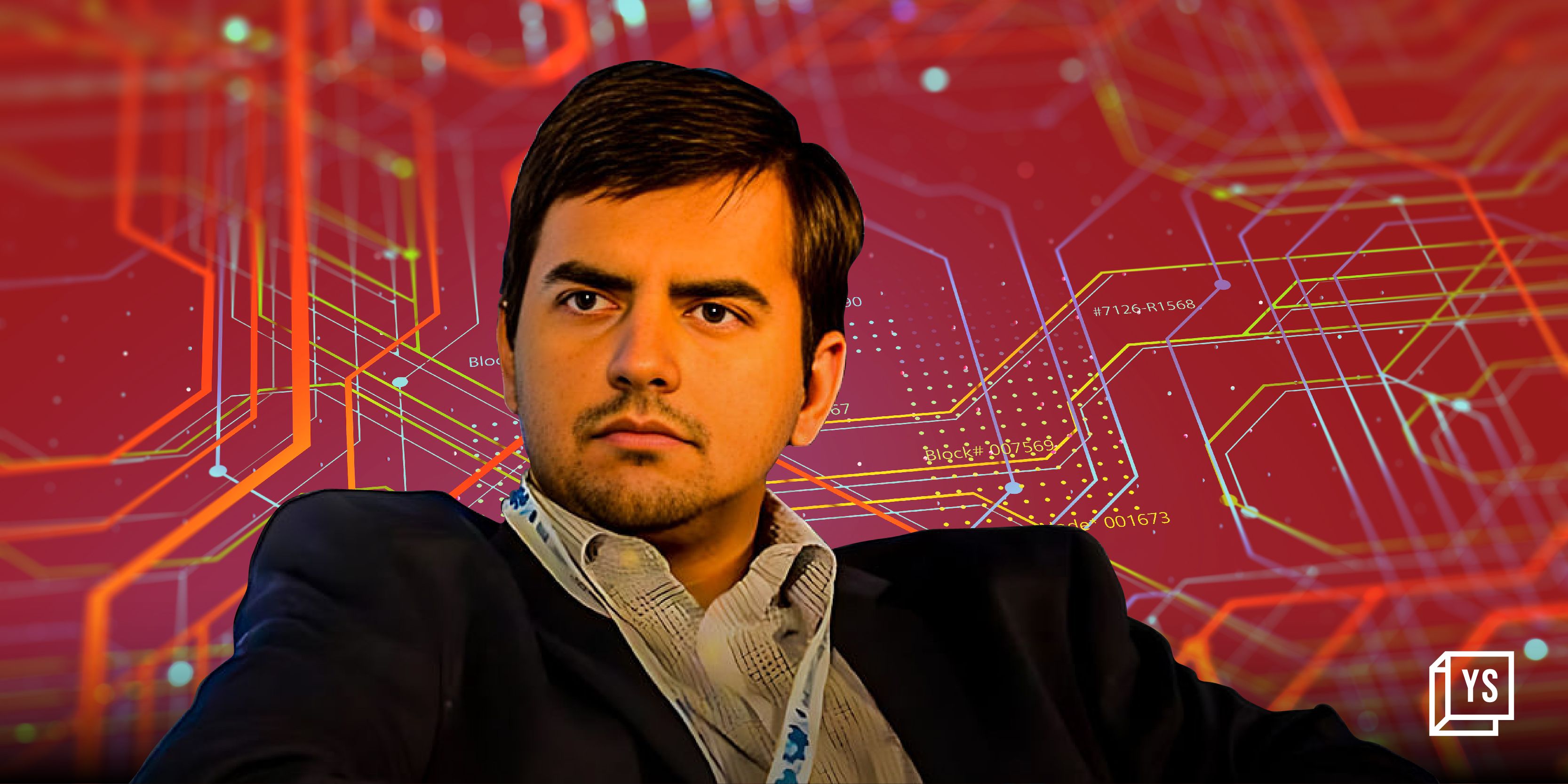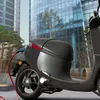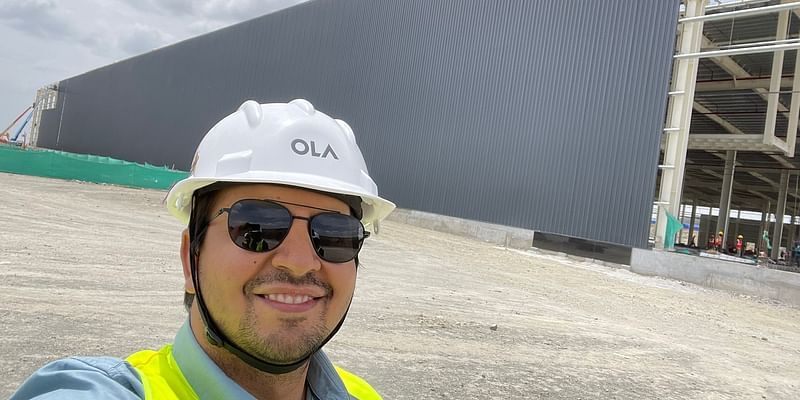
Having already made waves in ridesharing, electric vehicles, and cell production, CEO Bhavish Aggarwal has now set his sights on securing a slice of the artificial intelligence (AI) and computing pie by launching a new company in the domain.
The new company will focus on creating silicon chips, a cloud infrastructure to deliver solutions to customers, and AI models that will be developed in the Indian context, Bhavish Aggarwal tells YourStory. Initially, the company will work in conjunction with NVIDIA.
“We’re starting a business where we’re creating India’s computing stack,” Aggarwal says.
Krutrim Si Designs Pvt Ltd, Aggarwal’s new company, was incorporated in April, filings with the Ministry of Corporate Affairs show. Krishnamurthy Venugopala Tenneti has been listed as Krutrim’s sole director.
Citing the company’s ride-hailing business and electric scooters as examples of products that had to be built and tweaked to fit the Indian context, Aggarwal says silicon chips and the AI models they run don’t cater to India very well—and that’s primarily because of the multiple languages that exist in the country.
India boasts a staggering array of linguistic diversity, with about 122 prominent languages spoken alongside a mosaic of over 1,500 additional languages and dialects—something that an AI model developed in the West does not take into consideration.
Not just that, but AI in applications like autonomous vehicles has to be trained for Indian roads and traffic conditions, which are much different from those in the West, says the founder.
“A lot of our language is spoken, so we have to build speech technology for that…We have to build better vision technologies if we want to do autonomous in India because Indian roads are very different from Western roads,” he adds.
<figure class="image embed" contenteditable="false" data-id="523108" data-url="https://images.yourstory.com/cs/2/a9efa9c02dd911e9adc52d913c55075e/IMG2990-1629016963156.jpeg" data-alt="Ola Electric " data-caption="
” align=”center”>

.thumbnailWrapper
width:6.62rem !important;
.alsoReadTitleImage
min-width: 81px !important;
min-height: 81px !important;
.alsoReadMainTitleText
font-size: 14px !important;
line-height: 20px !important;
.alsoReadHeadText
font-size: 24px !important;
line-height: 20px !important;

The handling of all of this surplus data—such as real-time traffic updates, accurate mapping of roadblocks, dynamic road closures and detours, as in the case of autonomous vehicles—requires additional computational power.
Even the task of training AI to master Indian languages with their intricate subtleties needs more processing capability, which requires a revamp in the design of silicon chips.
Aggarwal revealed that he has already acquired several companies in the silicon-AI sphere. A significant portion of the funding for the new AI venture has been personally contributed by him.
Reportedly, Ola’s early investor, Matrix Partners has expressed interest in financing the new company.
The new entity will be separate from Ola’s other businesses, and that has been a conscientious decision by Aggarwal who reasons that the silicon chip and AI business will have its own capital needs and different set of investors who would want to fund such an initiative.
“There are a lot of synergies with the other two businesses [ridesharing and ], but it’s a large opportunity in itself also,” Aggarwal says.
The global silicon chip market is expected to grow at a CAGR of 4.3% to be valued at $15.2 billion by 2028, from $11.6 billion in 2022, according to market research firm IMARC Group.
Chip-making is a capital and knowledge-intensive prospect, with the most cutting-edge foundries producing the most advanced chips today requiring investments of tens of billions of dollars and thousands of semiconductor engineers. Even leading global players like Taiwan Semiconductor Manufacturing and Samsung have dedicated decades to honing and perfecting their chip manufacturing capabilities.
In a bid to boost local semiconductor companies in India as well as draw bigger players to the country, the Indian government, in 2021, unveiled a $10 billion fund and set up production-linked incentive schemes to support the semiconductor sector.
The US also launched a programme in 2022 called the CHIPS and Science Act—signed into law by President Joe Biden—to provide $280 billion for domestic research and manufacturing of semiconductors in India. The act provides subsidies, tax credits and spending money for training and research.
Cell production play
Ola’s silicon chip and AI business ties in with the company’s—and its firebrand founder’s—broader vision to develop tailor-made technologies for India and its unique use cases.
Through its new cell production hub—for which Ola is launching the 115-acre Ola Gigafactory—the company hopes to supply better, cheaper, and more dense cells to Indian EV makers, and reduce the country’s reliance on exports.
Currently, EV batteries are mostly produced in China and South Korea.
“We have done more than 500 patents in the cell domain over the last year,” Aggarwal says in the interview.
The company claims that it has completely re-engineered the cells, moving away from the 21700-type lithium-ion cells to develop ones that are five times larger, are more energy-dense, and feature enhanced specifications and properties.
Ola Cell Technologies will also focus on the next generation of cells, including cell technologies and chemistries, starting with solid-state lithium-ion batteries, and moving on to sodium technologies.
“The heart of EV is the cell and we realised that if we don’t make the cell on our own, our destiny will not be in our hands…the costs will never be in our control.”
Down the line though, Aggarwal says he doesn’t just want to cater to EVs but steer the ship towards energy storage solutions, where the company hopes to set up large, mega-grid storage facilities for renewable energy.
<figure class="image embed" contenteditable="false" data-id="523109" data-url="https://images.yourstory.com/cs/2/f49f80307d7911eaa66f3b309d9a28f5/Imageadoq-1624706696086.jpg" data-alt="Ola's Bhavish Aggarwal" data-caption="
Bhavish at the Ola Electric Factory
” align=”center”> Bhavish at the Ola Electric Factory
.thumbnailWrapper
width:6.62rem !important;
.alsoReadTitleImage
min-width: 81px !important;
min-height: 81px !important;
.alsoReadMainTitleText
font-size: 14px !important;
line-height: 20px !important;
.alsoReadHeadText
font-size: 24px !important;
line-height: 20px !important;

Charting his journey from creating a ridesharing app to his latest AI and silicon chip venture, Aggarwal says he believes it is pertinent that India leads the world when it comes to creating technologies of the future. The technologies he alludes to mainly refer to energy, climate, space, computing, and robotics.
More initiatives at Ola
Aggarwal says there’s “still a lot of stuff to do” in Ola’s core businesses, especially since came into existence.
“We have our own strategy as to how we go into that kind of consumption growth across multiple categories. We dominate ride-hailing and finance including EV finance, and we will add more commerce categories,” he adds.
The company has acquired an India-based mapping company to build its own maps, replacing Google Maps. On the finance front, Ola offers loan products for its EV customers, and financial services including access to loans for its driver-partners.
Eventually, Aggarwal says he wants to build a non-bank financial company (NBFC).
Check out the full interview on our Youtube Channel. Please subscribe and click on the bell icon to get notifications for updates.
Edited by Affirunisa Kankudti


![Read more about the article [App Friday] Sidechef makes every day meal planning and cooking easy as pie](https://blog.digitalsevaa.com/wp-content/uploads/2022/04/Imagep2xz-1651147696649-300x150.jpg)




![Read more about the article [Funding roundup] EdgeGrid, FairPlum, Molitics, Paperplane, Yoro raise funds](https://blog.digitalsevaa.com/wp-content/uploads/2022/03/Untitleddesign-2020-10-14T182240-1602679971437-300x150.png)


